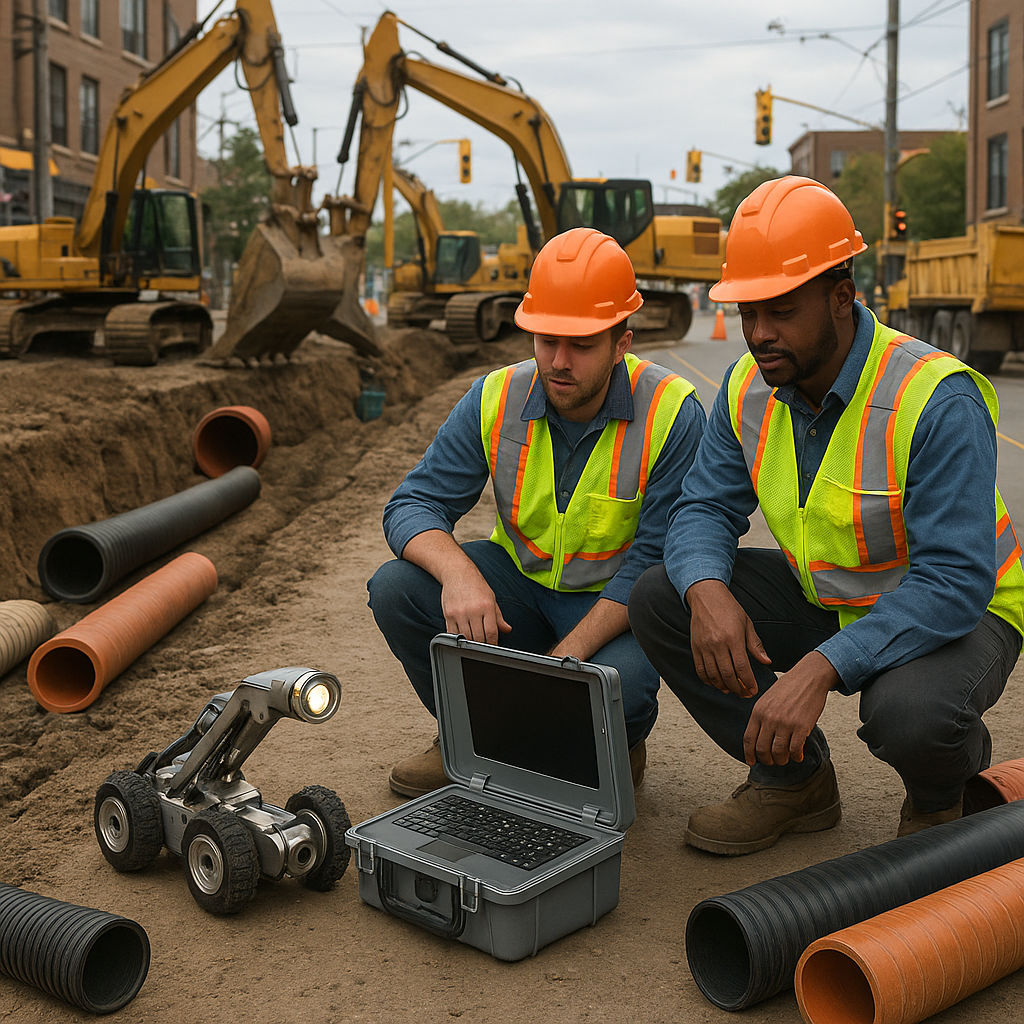Advanced Drain Inspection Equipment for 2024
Explore cutting-edge drain inspection equipment trends for 2024 focusing on AI, robotics, and digital management for improved sewer inspections.

Introduction
In 2024, the drain inspection equipment landscape is evolving rapidly with advancements in robotics, artificial intelligence (AI), and digital data management. These innovations are transforming sewer inspections, offering greater accuracy, safety, and cost-efficiency. This article explores the latest trends, technologies, and market opportunities in drain inspection equipment.
New Technologies and Equipment
Robotic Crawler Systems
Robotic crawler systems equipped with high-definition, pan-and-tilt cameras are central to modern drain inspection. These systems have been enhanced with AI-powered automated defect detection, which flags issues such as cracks, joint displacements, and root intrusions in real time.
- Miniaturization: Advances in miniaturization allow these robots to access previously unreachable narrow pipes.
- GPS and Cloud Integration: Integration of GPS and cloud-based data storage improves data management and remote operation capabilities.
- Digital Twins and AI Apps: These tools provide comprehensive, real-time condition assessments and predictive maintenance planning.
AI-Powered Software
AI-enhanced software doubles inspection productivity and reduces unnecessary repairs by accurately identifying problems before they escalate. This technology is crucial for municipalities looking to maintain infrastructure efficiently.
Industry Regulations and Standards
Stricter government regulations and compliance requirements drive the adoption of technologies that enable precise leak detection and environmental monitoring. Automated reporting ensures adherence to safety and environmental standards.
- EPA Compliance: New regulations necessitate precise data collection and reporting, which modern equipment can facilitate.
- Safety and Environment: Advanced equipment helps meet regulatory demands while minimizing environmental impact.
Market Trends and Business Opportunities
The market for drain inspection equipment is expanding due to aging urban infrastructure and increased government investment. This growth is accompanied by a shift toward preventative maintenance.
- Specialized Cameras: Rising demand for specialized cameras, such as those for lateral line inspection, is notable.
- Cloud-Based Analytics: These tools facilitate benchmarking and asset management across municipalities.
- Interoperability Standards: Standards are emerging to ensure seamless integration among various technologies.
Safety Protocols and Best Practices
Remote-operated cameras and robots reduce worker exposure to hazardous environments, such as confined spaces with toxic gases. Technologies like portable gas detectors, real-time video feeds, and digital safety logs are now standard.
- Minimizing Risks: These advancements help maintain compliance with occupational safety regulations.
- Operational Efficiency: Safer operations also enhance productivity and reduce downtime.
Recent Case Studies or Success Stories
Town of Newburgh
The Town of Newburgh's use of AI-powered PipeAId software in conjunction with GIS to create digital twins of their sewer network exemplifies the benefits of data-driven inspection. This approach has improved transparency, extended pipe lifespan, and enabled cost-effective maintenance decisions.
Cost and Pricing Information
While specific pricing varies, the adoption of AI and robotic systems is justified by significant cost savings from early defect detection, reduced manual labor, and fewer emergency repairs. Predictive rehab planning lowers lifecycle costs by targeting interventions optimally.
Conclusion
The 2024 drain inspection equipment landscape is characterized by the fusion of robotics, AI, and digital twins. These innovations enable safer, more accurate, and cost-effective sewer inspections, aligning with evolving regulatory demands and infrastructure challenges. As the industry continues to evolve, these technologies will be integral to sustainable and efficient infrastructure management.
In summary, these advancements are transforming the plumbing and sewer inspection industry into a data-driven, proactive field focused on sustainability and operational efficiency.